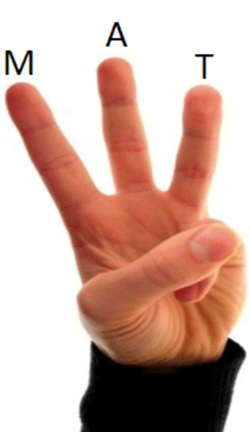We use Read Write Inc Phonics (RWI) to give your child the best possible start with their literacy.
Read Write Inc (RWI) is a phonics programme which helps all children learn to read fluently and at speed so they can focus on developing their skills in comprehension, vocabulary, and spelling. It also allows them to spell effortlessly so that they can put all their energy into composing what they write. The children are assessed by our RWI lead teacher (Mrs Downes) and are grouped according to their ability. Small group phonics lessons are taught daily by trained staff and there are consistent expectations across the range of abilities. At the end of each half term the children are assessed to check on their progress and regrouped.Children learn sounds in school which help them to read and write. They then practise these skills through reading ‘Book Bag Books’ at home which are specifically pitched to both consolidate learning and provide challenge in an engaging and fun way! This is what they look like.

The children are taught the sounds in 3 sets.Set 1 Sounds are taught in the following order together with rhymes to help children form the letters correctly and instantly recognise sounds ready for blending.
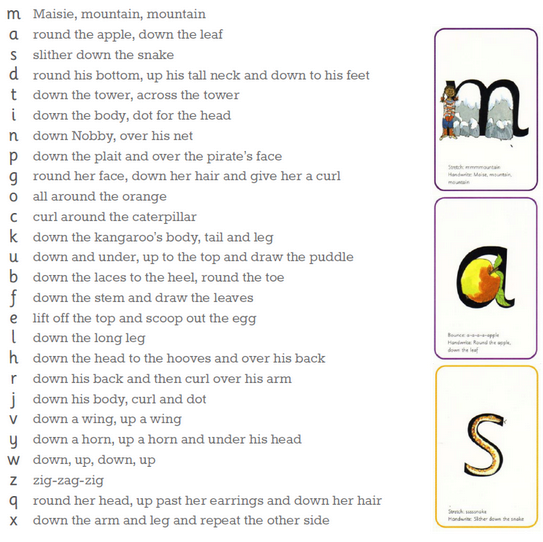
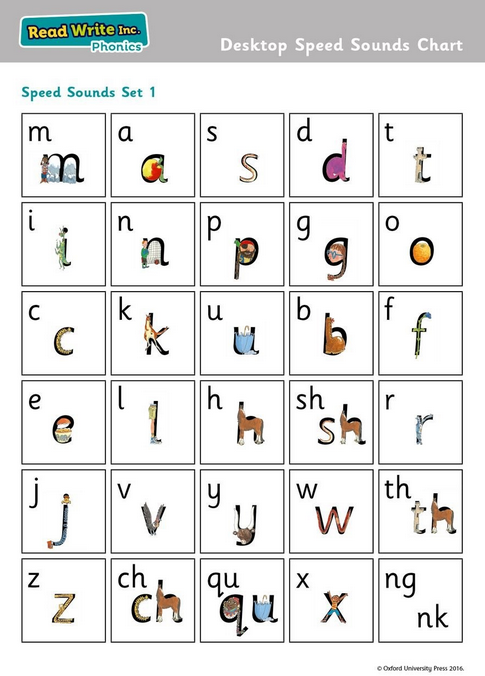
The children are then taught Set 2 Sounds – the long vowels.
Set 2 Soundsay: may I play ee: what can you seeigh: fly high ow: blow the snow oo: poo at the zoo oo: look at the bookar: start the caror: shut the door
air: that’s not fair
ir: whirl and twirl
ou: shout it out
oy: toy for a boy
When they are very confident with all Set 1 and 2, they are taught Set 3 Sounds.
Set 3 Soundsea: cup of tea
oi: spoil the boy
a-e: make a cake
i-e: nice smile
o-e: phone home
u-e: huge brute
aw: yawn at dawn
are: share and care
ur: purse for a nurse
er: a better letter
ow: brown cow
ai: snail in the rain
oa: goat in a boat
ew: chew the stew
ire: fire fire!
ear: hear with your ear
ure: sure it’s pure?
tion: (celebration)
tious / cious: (scrumptious / delicious)
e: he me we she be
Fred Talk
 We use pure sounds (‘m’ not’ muh’,’s’ not ‘suh’, etc.) so that your child will be able to blend the sounds into words more easily. Fred is our Read, Write Inc. friend. He can only speak in sounds, so we help him learn to say words instead of sounds. For example, Fred says ‘m-a-t’ instead of mat. We also teach him not to add ‘uh’ to our sounds to keep them pure. For example, we say ‘c’ and not ‘cuh‘.
We use pure sounds (‘m’ not’ muh’,’s’ not ‘suh’, etc.) so that your child will be able to blend the sounds into words more easily. Fred is our Read, Write Inc. friend. He can only speak in sounds, so we help him learn to say words instead of sounds. For example, Fred says ‘m-a-t’ instead of mat. We also teach him not to add ‘uh’ to our sounds to keep them pure. For example, we say ‘c’ and not ‘cuh‘.

Children will:
- learn 44 sounds and the corresponding letters/letter groups using simple picture prompts
- learn to read words using sound blending
- read lively stories featuring words they have learned to sound out
- after meaningful discussion led by an adult, children show that they comprehend the stories by answering questions
BlendingHelp your child learn to read words by sound-blending (Fred talk) eg. c-a-t = cat, sh-o-p = shop. Children learn to read words by blending the letter-sounds that are in the Speed Sounds set. Help your child to say the pure sounds (‘m’ not ‘muh’, ‘s’ not ‘suh’ etc.) as quickly as they can, and then blend the sounds together to say the whole word.
Spelling with your Fred FingersChildren are taught to use their fingers to help them write words. The children say the word out loud and break it down into its individual sounds. If a word has 3 sounds children hold up 3 fingers, 4 sounds 4 fingers etc. Children pinch each finger as they say the sounds needed in the word then they write the letters that represent each sound. When using Fred Fingers each finger represents one sound. When children reach yellow Read Write Inc. storybooks, they will learn to trace the letters onto each finger and say the letter names.
Nonsense words (Alien words) Research has shown that incorporating nonsense words into teaching reading can be an effective way to establish blending and segmenting skills. However, it is important to ensure that children understand that they are reading nonsense words (and why) so that they are not confused by trying to read the words for meaning. By reading nonsense words children develop their ability to decode individual sounds and then blend them together to read. They are an indicator of early reading skills and work as a quick, reliable, and valid way of assessing children. However, reading nonsense words is only a small part of the Read, Write Inc. phonics teaching.



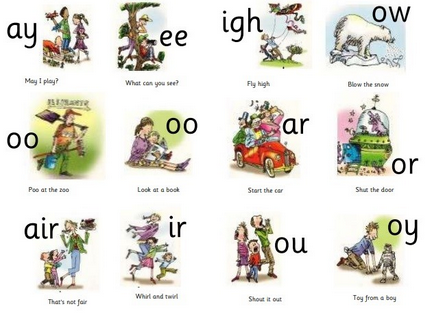
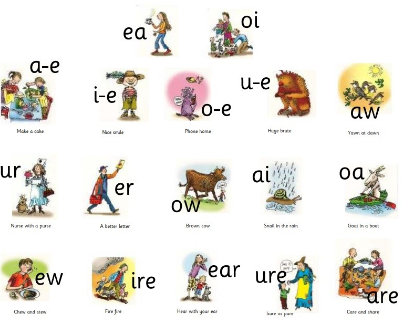
 We use pure sounds (‘m’ not’ muh’,’s’ not ‘suh’, etc.) so that your child will be able to blend the sounds into words more easily. Fred is our Read, Write Inc. friend. He can only speak in sounds, so we help him learn to say words instead of sounds. For example, Fred says ‘m-a-t’ instead of mat. We also teach him not to add ‘uh’ to our sounds to keep them pure. For example, we say ‘c’ and not ‘cuh‘.
We use pure sounds (‘m’ not’ muh’,’s’ not ‘suh’, etc.) so that your child will be able to blend the sounds into words more easily. Fred is our Read, Write Inc. friend. He can only speak in sounds, so we help him learn to say words instead of sounds. For example, Fred says ‘m-a-t’ instead of mat. We also teach him not to add ‘uh’ to our sounds to keep them pure. For example, we say ‘c’ and not ‘cuh‘. 


